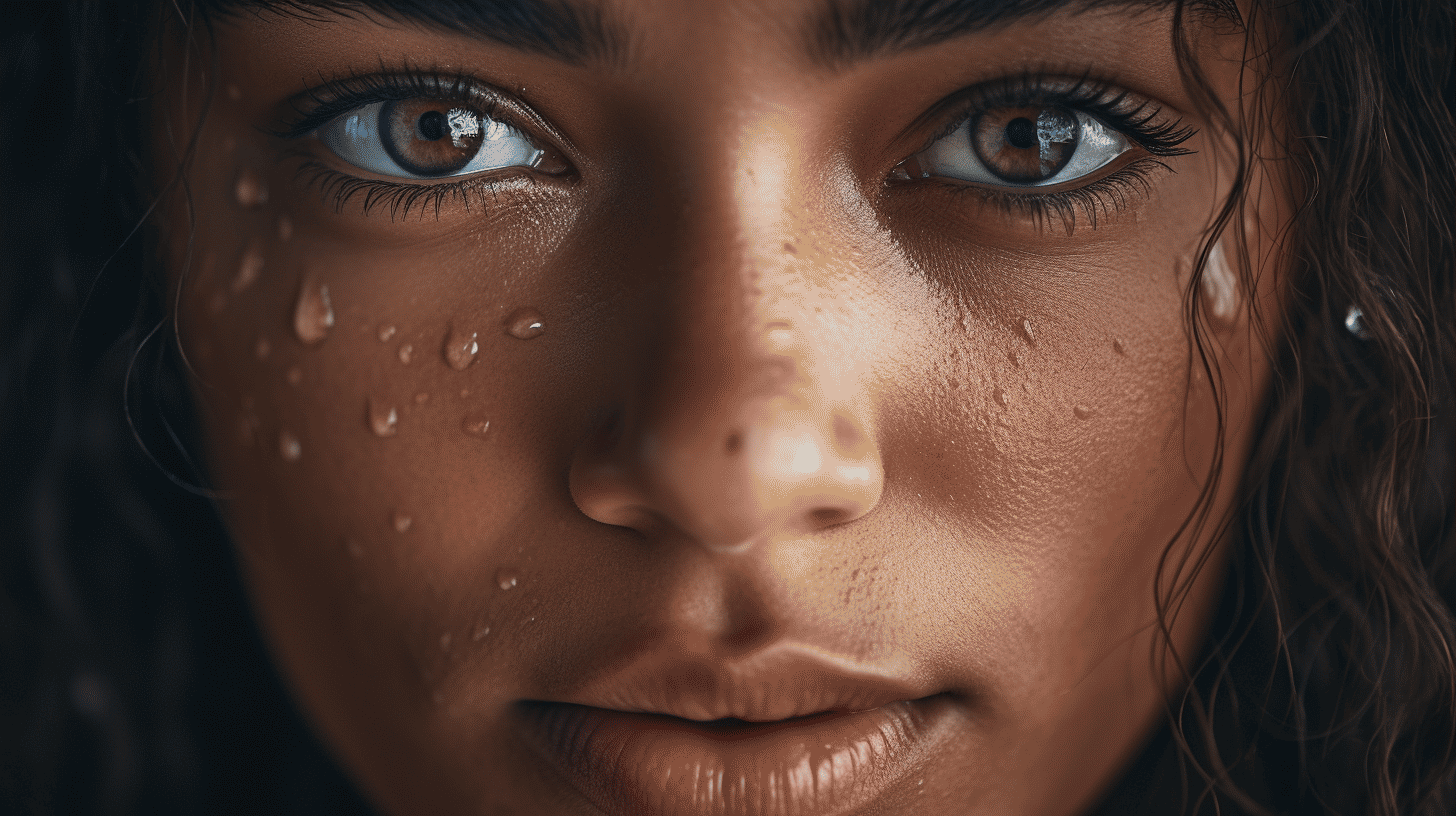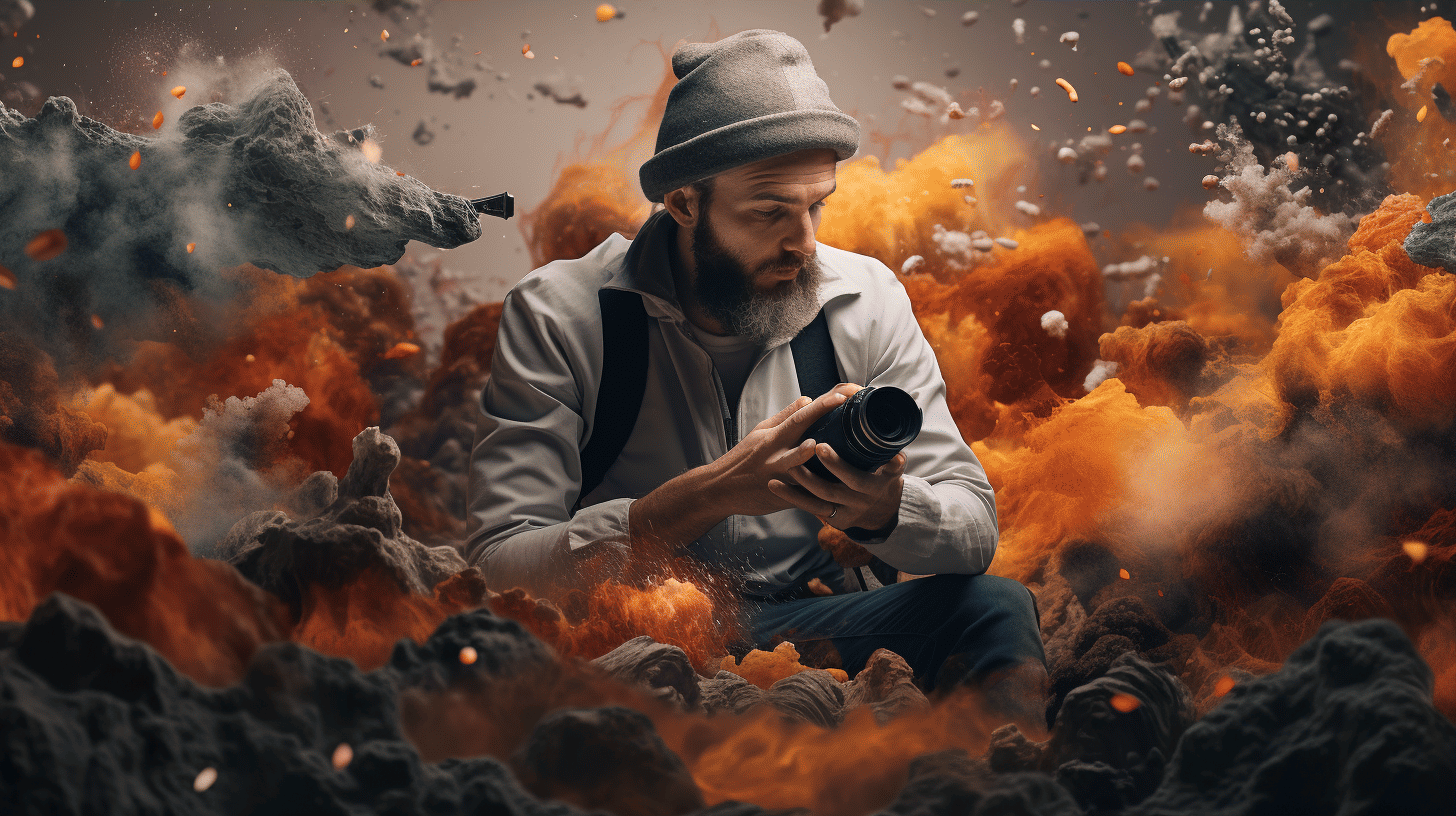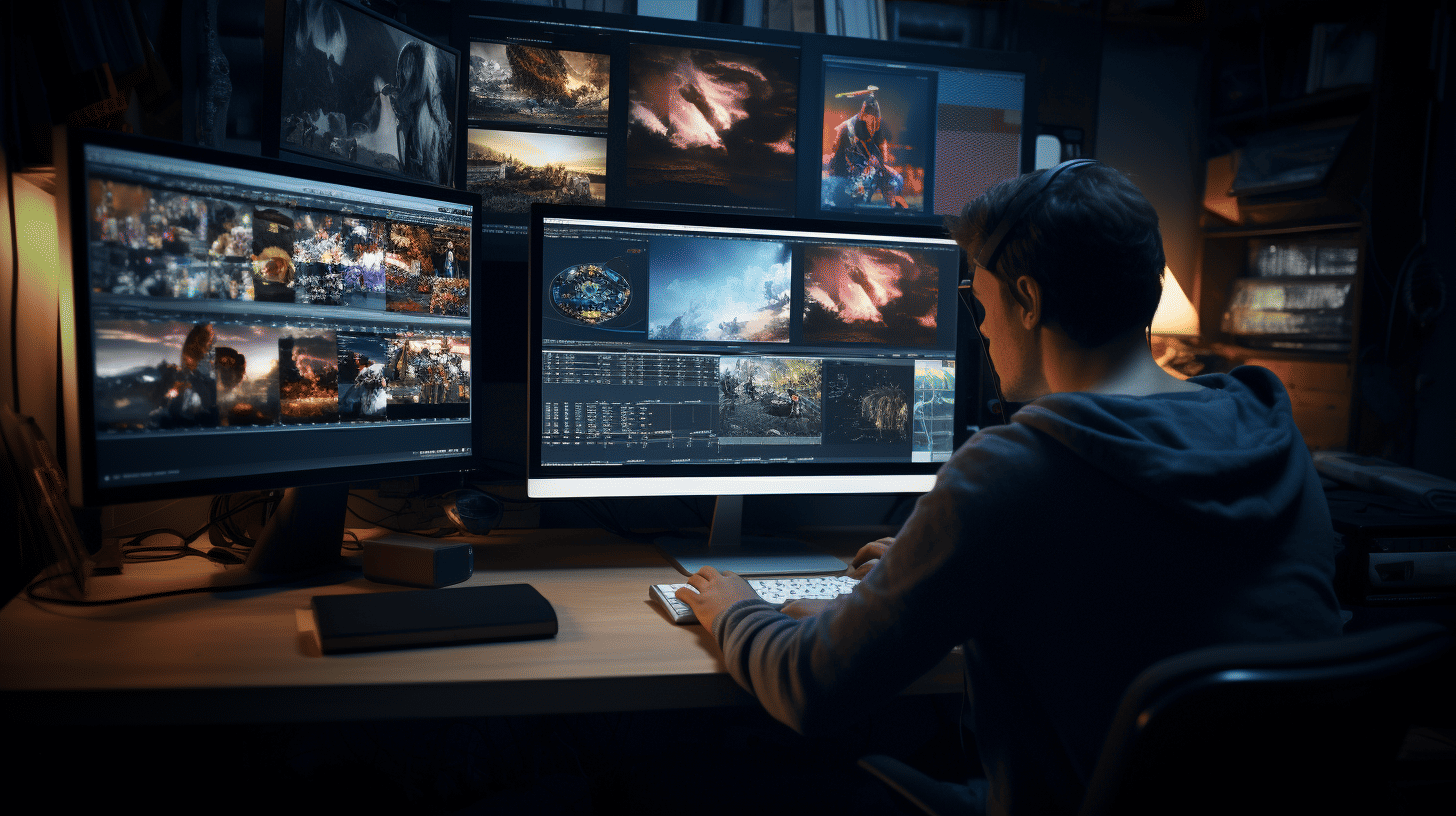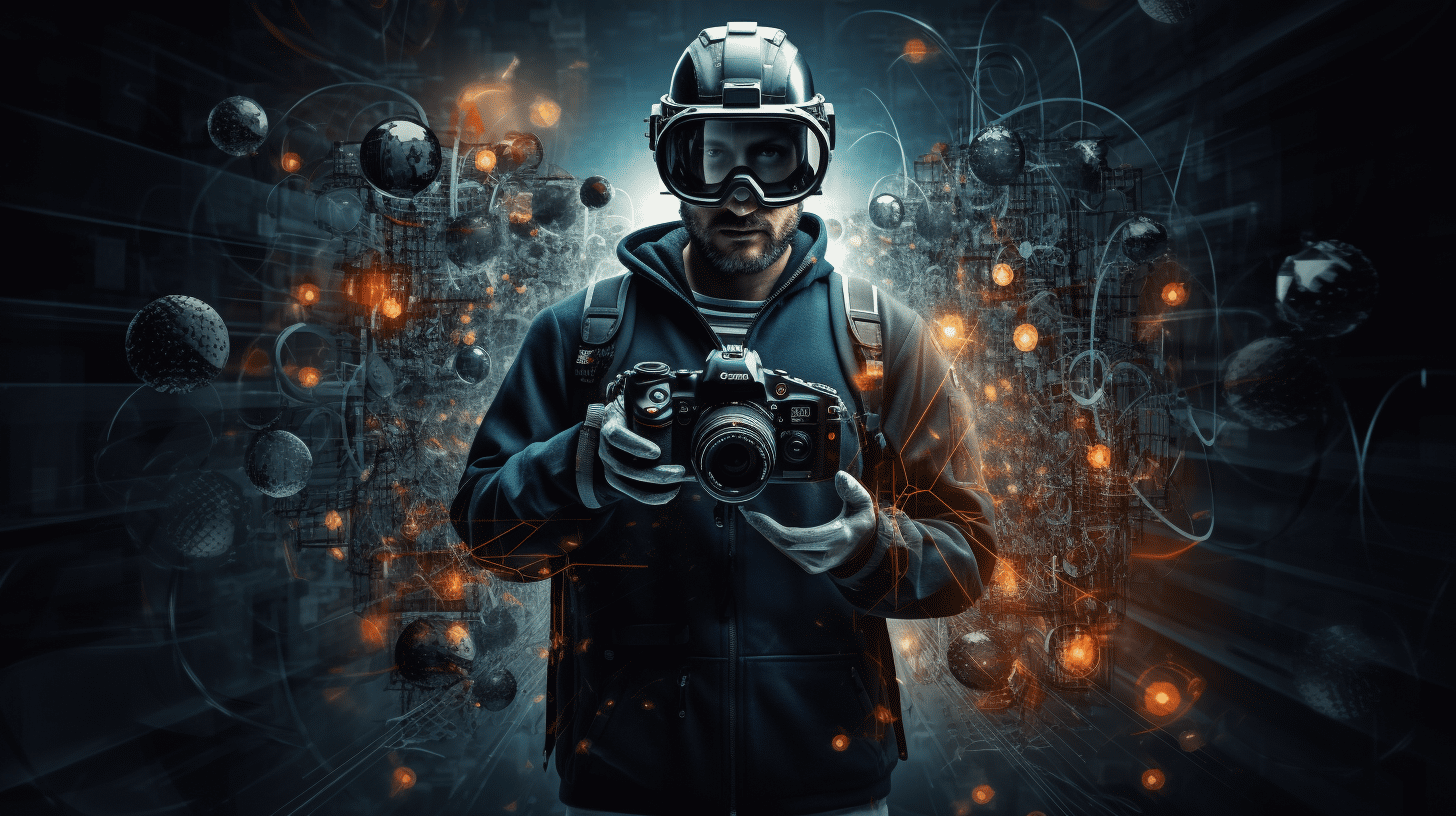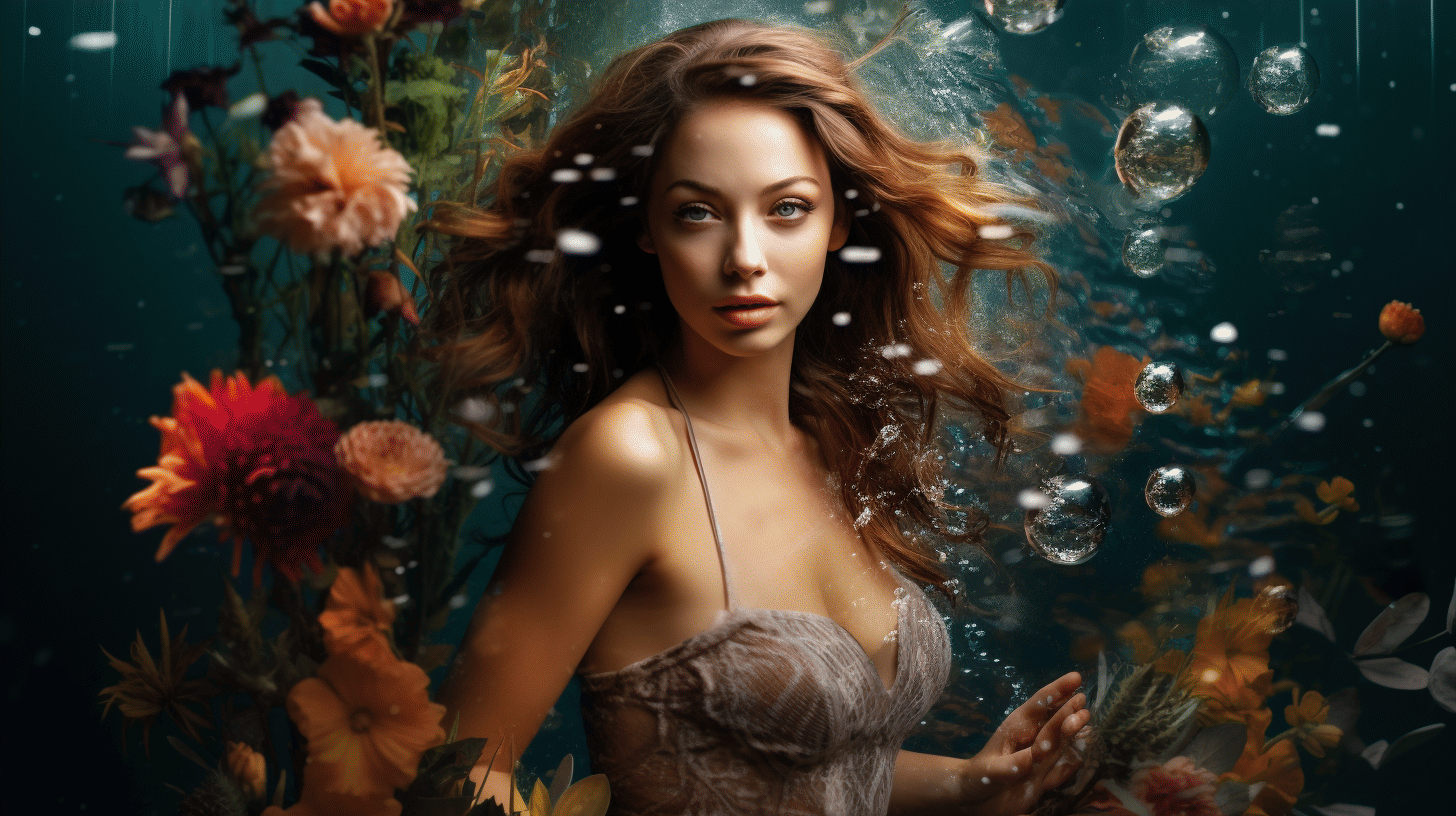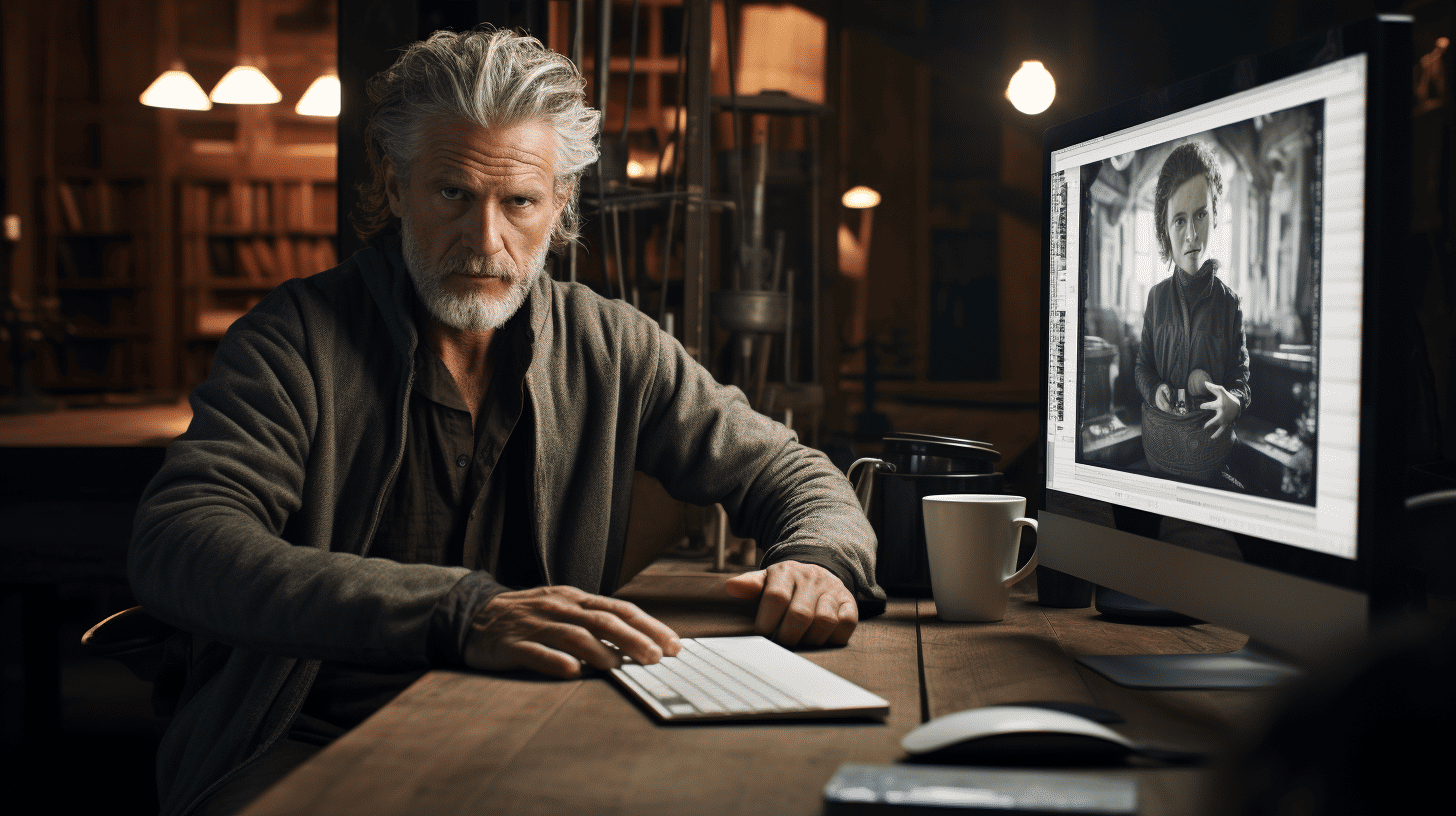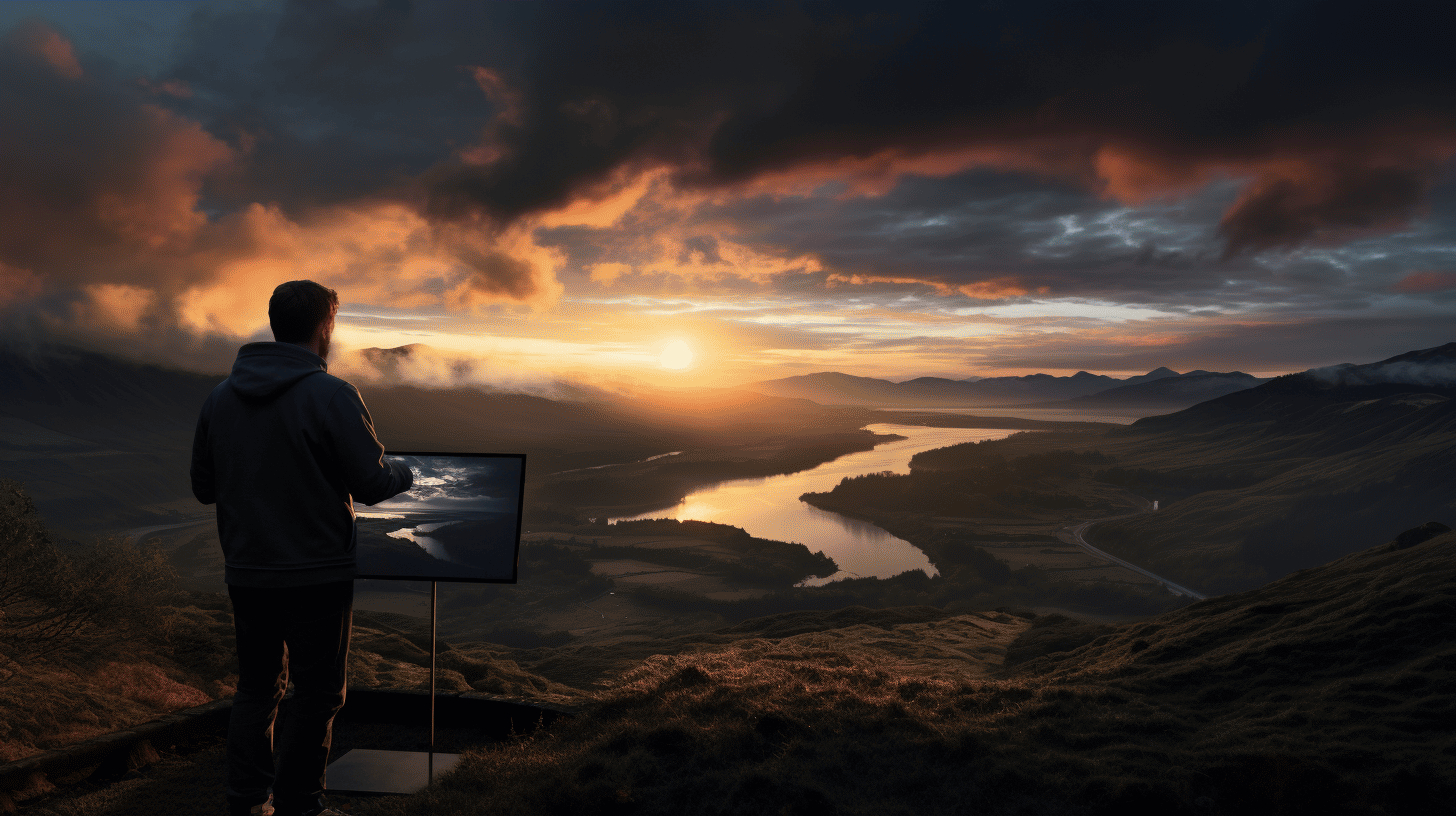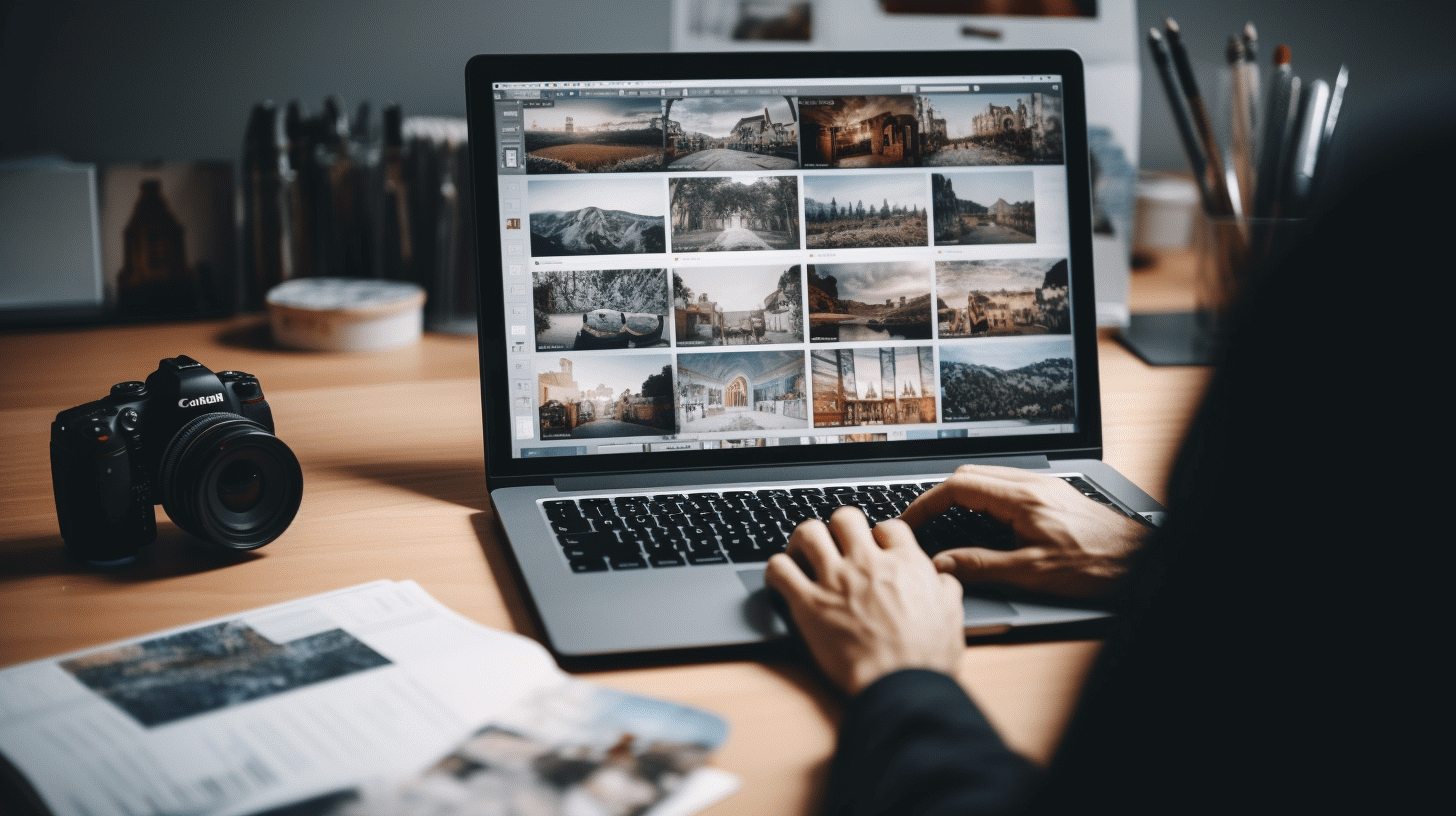Portraiture is an art form that captures the essence of human emotion and tells compelling stories through images. From the subtle smile of a child to the raw vulnerability of a portrait subject, emotions bring depth and connection to photography. Whether you’re an aspiring photographer or a seasoned pro, mastering the art of capturing emotion in your shots can take your portraits to a whole new level.
In this guide, we will delve into the world of portraiture and explore the power of emotion in creating impactful photographs. We’ll discuss the different styles of portraiture, understand the role of human emotion in visual language, and highlight the techniques that can help you capture authentic and evocative emotions in your portraits.
Through this journey, you’ll discover how to establish a connection with your subject, utilize light to emphasize emotion, and leverage your own emotions as a photographer. We’ll also delve into the technical aspects of portraiture, such as choosing the right gear, understanding composition, and employing focus and blur techniques to enhance the emotional impact of your shots.
Furthermore, we’ll explore post-processing techniques that can elevate the emotional content of your portraits even further. From color grading and mood enhancement to accentuating expressions and creating more impactful compositions through cropping, these editing techniques will help you bring out the true essence of your subjects in your final images.
So, whether you’re aiming to capture the joy of a milestone celebration, the quiet introspection of a thoughtful moment, or the intensity of a passionate expression, this guide will arm you with the knowledge and skills to master the art of capturing emotion in your shots. Let’s dive in and explore the captivating world of portraiture together!
Understanding Portraiture
What is Portraiture?
Portraiture is the art of capturing the likeness and essence of a person or a group of people through various visual mediums, such as painting, photography, or sculpture. It is a powerful way to convey emotions, personalities, and stories, making it a significant genre of art that has been practiced for centuries.
Portraits can be highly realistic or stylized, depending on the artist’s intention and the era in which they were created. They have the ability to freeze a moment in time and preserve the individual’s features, expressions, and characteristics for future generations to appreciate.
This art form not only serves as a means of documentation but also as a form of self-expression for both the artist and the subject of the portrait. It allows viewers to connect with the person depicted, invoking empathy, curiosity, and sometimes even awe.
Different Styles of Portraiture
Portraiture has evolved over time, and various styles and techniques have emerged, each with its own unique approach to capturing the human form. Here are some of the most notable styles of portraiture:
- Realistic Portraiture: This style aims to depict the subject as accurately as possible, paying meticulous attention to details such as facial features, skin texture, and lighting. Artists using this style strive to create a faithful representation of the individual, often achieving a near-photographic level of realism.
- Impressionistic Portraiture: In contrast to realistic portraiture, impressionistic portraits focus on capturing the overall impression of the subject rather than minute details. Artists using this style employ loose brushstrokes, vibrant colors, and a sense of movement to convey the subject’s mood or personality.
- Abstract Portraiture: Abstract portraiture takes a departure from realistic representation and ventures into the realm of experimentation and interpretation. Artists using this style may distort or exaggerate facial features, play with colors and textures, or adopt unconventional perspectives to evoke emotions or convey a deeper meaning.
- Photographic Portraiture: With the advent and advancement of photography, portraiture has found a new medium for expression. Photographers use techniques such as lighting, composition, and posing to capture the subject’s personality, expressions, and mood. From candid street portraits to meticulously staged studio portraits, photography offers a wide range of possibilities for portraiture.
- Conceptual Portraiture: Conceptual portraiture goes beyond representing physical appearance and delves into the realm of ideas, themes, and narratives. Artists using this style often incorporate symbolism, props, or dramatic staging to convey a deeper message or explore social, cultural, or personal concepts through their subjects.
Each style of portraiture offers a unique perspective and artistic vision, allowing artists to explore and express their creativity while connecting with their subjects on a deeper level.
Take a look at the evolution of portraiture throughout art history in this interactive timeline.
The Human Emotion and its Influence in Portraits
Portraits have the power to capture the raw and authentic emotions of the subject. Whether it’s a smile, a tear, or a thoughtful gaze, emotions can speak volumes in a single frame. Understanding and effectively portraying emotion in portraits is an essential skill for photographers and artists alike. In this section, we will delve deeper into the significance of human emotion in visual language and explore why it is often considered the core of portrait photography and art.
Understanding Emotion in Visual Language
Emotion is a universal language that transcends culture, language, and background. It is something we can all relate to and understand, even without words. When we look at a portrait, we instinctively connect with the emotions expressed by the subject. This connection is what makes portraits so powerful and impactful.
In visual language, emotion can be conveyed through various elements, such as facial expressions, body language, and composition. It is the photographer or artist’s role to capture these emotions and portray them in a way that resonates with the viewer. By harnessing the power of emotion, portraits can provoke empathy, stir emotions, and tell compelling stories.
Difference between a Picture and a Portrait
While a picture captures a moment in time, a portrait goes beyond that. It is a window into the subject’s inner world, revealing their true essence and emotions. A well-executed portrait allows us to glimpse into the soul of the subject and connect with their humanity.
In contrast, a picture may capture a beautiful landscape or a group of people smiling for the camera, but it may lack the depth and emotional impact that a portrait can offer. A portrait is an intimate and personal portrayal that goes beyond surface-level aesthetics, inviting the viewer to engage with the subject on an emotional level.
Emotion as the Core of Portraits
Emotion is often considered the core of portraits because it is what gives them life and personality. Without emotion, a portrait may appear flat, lifeless, and lacking in impact. By capturing and expressing the emotions of the subject, photographers and artists can create portraits that resonate with the viewer on a deeper level.
Emotions in portraits can range from joy and love to sadness and vulnerability. Each emotion carries with it a unique energy and story that can be conveyed through careful composition, lighting, and subject interaction. By understanding the nuances of human emotion and how to capture them, photographers and artists can create portraits that evoke powerful emotional responses in the viewer.
In conclusion, emotion plays a vital role in the world of portraits. By understanding and effectively capturing the emotions of the subject, photographers and artists can create portraits that touch the hearts and minds of viewers. It is through emotion that portraits become more than just images; they become windows into the human experience. So next time you pick up your camera or paintbrush, remember the power of emotion and let it guide you in creating captivating and meaningful portraits.
Mastering the Art of Capturing Emotion
When it comes to photography, capturing emotion is what separates a good photo from a truly captivating one. Emotions have the power to connect with viewers on a deep level, evoking memories, empathy, and a sense of shared experience. Whether you’re photographing people, animals, or landscapes, mastering the art of capturing emotion is a skill that every photographer should strive for.
Establishing Connection with the Subject
One of the key elements in capturing emotion is establishing a connection with your subject. Whether it’s a person or an animal, taking the time to build rapport and create a comfortable environment can make all the difference in the final result. Here are some techniques to help you establish that connection:
- Engage in conversation: Talk to your subject and get to know them. Ask open-ended questions that encourage them to share their thoughts and feelings. Not only will this help you create a relaxed atmosphere, but it will also provide valuable insights into their personality and emotions.
- Active listening: Pay attention to your subject’s body language, facial expressions, and tone of voice. By actively listening and responding to their emotions, you can better understand what moments to capture.
- Empathy: Put yourself in your subject’s shoes and try to understand their emotions. This will help you anticipate those decisive moments when emotions are at their peak.
Utilizing Light to Emphasize Emotion
Lighting plays a crucial role in capturing and emphasizing emotion in your photos. Different lighting techniques can evoke different feelings and moods. Here are a few ways to use light to enhance the emotional impact of your photographs:
- Soft, diffused light: This type of lighting creates a gentle and serene atmosphere, ideal for capturing tender and intimate emotions. Overcast days or shooting near a window during golden hour are great ways to achieve soft light.
- Dramatic lighting: Harsh shadows and contrast can add drama and intensity to your photos, perfect for portraying strong emotions like anger, sadness, or passion. Experiment with backlighting or using a single light source to create striking effects.
- Play with colors: Different colors have different emotional associations. Warm tones like red and orange can convey feelings of warmth, passion, and energy, while cooler tones like blue and green can evoke calmness and tranquility. Pay attention to the color palettes in your photographs to enhance the emotional impact.
The Role of the Photographer’s Emotion
As a photographer, your own emotions can greatly influence the way you capture and convey emotion in your photos. Here’s why:
- Empathy and connection: When you genuinely empathize with your subjects and connect with their emotions, it will reflect in your photographs. Your ability to feel what they feel will translate into more authentic and powerful images.
- Intuition and instinct: Trusting your intuition and following your instincts can lead to capturing the most genuine and spontaneous moments. Your emotions can guide you to recognize those decisive moments when emotions peak.
- Interpretation and vision: Your unique perspective and emotional interpretation of a scene or subject can transform an ordinary photograph into something extraordinary. It’s important to tap into your own emotions and translate them creatively into your work.
Timing: Waiting for the Right Moment
Timing is everything when it comes to capturing emotion. It’s about being patient, observant, and ready to capture that perfect moment. Here are some tips for timing your shots effectively:
- Anticipation: Study your subject and observe their behavior to anticipate moments when emotions are likely to be expressed strongly.
- Patience: Sometimes, you have to wait for the right moment to unfold. Be patient and give your subject the time they need to fully express their emotions.
- Rapid-fire shooting: When emotions are in full swing, don’t hesitate to take multiple shots in quick succession. This increases your chances of capturing that one frame where all the emotions come together perfectly.
In conclusion, capturing emotion in photography is an art that requires a combination of technical skills, empathy, and intuition. By establishing a connection with your subject, utilizing light effectively, tapping into your own emotions, and mastering the art of timing, you can create photographs that provoke powerful emotions in your viewers. So go out there, let your emotions guide you, and capture that perfect moment that tells a thousand stories.
Technical Aspects in Capturing Emotion in Portraits
Capturing emotion in portraits is an art form that requires a delicate balance between technical skill and creative vision. To truly convey emotion through a photograph, photographers must pay attention to various technical aspects. In this article, we will explore some key technical aspects that can help photographers capture emotion in portraits effectively.
Choosing the Right Gear
When it comes to capturing emotion in portraits, having the right gear can make a significant difference. Here are some key considerations when selecting your equipment:
- Camera: Invest in a DSLR or mirrorless camera with manual controls to have full control over settings such as exposure, focus, and white balance.
- Lenses: Choose lenses based on the desired effect and the distance between you and your subject. A prime lens with a wide aperture can help create a shallow depth of field and add a dreamy quality to your portraits.
- Lighting equipment: Consider using natural light, as it can add depth and dimension to your portraits. However, having a portable lighting setup can be beneficial, especially in low-light environments.
Understanding Composition
Composition plays a crucial role in capturing emotion in portraits. It involves arranging elements within the frame to create a visually compelling image. Here are some compositional techniques to consider:
- Rule of thirds: Divide your frame into thirds both horizontally and vertically, placing the key elements along these lines or at their intersections.
- Leading lines: Use lines to guide the viewer’s eye towards your subject. This could be a staircase, a road, or any other element that creates a natural flow.
- Negative space: Leaving empty space around your subject can emphasize their presence and evoke a sense of isolation or solitude.
Creating Depth and Dimension
To make your portraits visually engaging, it is important to create depth and dimension within the frame. Here are some techniques to achieve this:
- Depth of field: Using a wide aperture (small f-number) can create a shallow depth of field, blurring the background and drawing attention to the subject.
- Foreground elements: Including foreground elements, such as foliage or objects, can add layers and depth to your composition.
- Background selection: Choose a background that complements the subject and enhances the mood. A simple and uncluttered background can help emphasize the emotions of your subject.
Focus and Blur Techniques
The use of focus and blur techniques can add an artistic touch to your portraits and highlight the emotions of your subject. Consider the following tips:
- Selective focus: Use a wide aperture to focus on the subject’s eyes or specific facial features, while allowing other areas to blur out slightly. This technique can draw attention to the emotions expressed through these features.
- Motion blur: Experiment with intentional motion blur to capture a sense of movement or energy. This can be achieved by using a slow shutter speed while capturing the portrait.
- Bokeh: Create pleasing and ethereal backgrounds by utilizing bokeh. This can be achieved by using a wide aperture and positioning the subject against a distant light source.
By paying attention to these technical aspects, photographers can elevate their portraits and effectively capture the emotions of their subjects. Remember, capturing emotion is not just about technical prowess but also about establishing a connection with your subject and allowing their true emotions to shine through.
[DSLR]: Digital Single Lens Reflex
Post-Processing Techniques for Enhancing Emotion in Portraits
Color Grading and Mood
When it comes to capturing emotion in portraits, color grading plays a crucial role in setting the mood and enhancing the overall impact of the image. By manipulating the colors, you can create a specific atmosphere and evoke certain emotions in the viewer. Here are some post-processing techniques that can help you achieve this:
- Contrast and Saturation: Adjusting the contrast and saturation levels can significantly impact the mood of a portrait. Increasing the contrast adds a sense of drama, while reducing it creates a softer and more subtle atmosphere. Experimenting with saturation levels can also enhance the emotional tone of the image, whether you want to create vibrant and energetic vibes or a more desaturated and melancholic look.
- Color Grading: Color grading involves manipulating specific color channels to achieve a desired effect. By adjusting the hue, saturation, and luminance of different colors, you can create a unique and personalized look for your portraits. Warm tones like oranges and yellows often elicit feelings of warmth and coziness, while cooler tones like blues and purples can evoke a sense of calmness or mystery.
- Split Toning: Split toning is a technique where you assign different colors to the highlights and shadows of an image. This can create a distinct color contrast that adds depth and emotion to the portrait. For example, adding a warm tone to the highlights and a cool tone to the shadows can create a captivating and contrasting effect that draws attention to certain parts of the image.
Remember, the goal is to use color grading techniques to enhance the emotions already present in the portrait. Pay attention to the subject’s expressions and the story you want to tell, and let the colors amplify and intensify those emotions.
Accentuating Expressions by Dodging and Burning
Dodging and burning is a technique that involves selectively lightening and darkening specific areas of an image to draw attention to certain details. This technique can be particularly effective in accentuating expressions and emotions in portraits. Here’s how you can use dodging and burning to enhance the emotional impact of your portraits:
- Dodging: Dodging involves lightening specific areas of the image to highlight them. By selectively brightening the subject’s eyes, for example, you can make them appear more vibrant and expressive. Similarly, brightening certain areas of the face where the light naturally hits can enhance the subject’s features and bring out their emotions.
- Burning: Burning, on the other hand, involves darkening specific areas to create shadows and add depth to the image. Darkening the background behind the subject can help isolate them and make their expressions stand out even more. It can also create a sense of mystery or intensity, depending on the overall mood you want to convey.
- Subtlety is key: When using dodging and burning, it’s important to maintain a sense of subtlety. Avoid excessive manipulation that may lead to unnatural results. The aim is to enhance the emotions already present in the portrait, not to create something entirely different.
Cropping for More Impact
Cropping is a simple yet powerful technique that can significantly impact the emotional impact of a portrait. By carefully selecting and framing different parts of the image, you can create a stronger composition and draw attention to the subject’s emotions. Here are a few tips for using cropping to enhance emotional impact:
- Focus on the eyes: The eyes are often referred to as the windows to the soul, and they play a crucial role in conveying emotions. By cropping the image to emphasize the subject’s eyes, you can create a stronger connection between the viewer and the subject, intensifying the emotional impact.
- Experiment with different ratios: Consider experimenting with different aspect ratios when cropping your portraits. For example, a square crop can create a more intimate and focused feel, while a wide crop can add a sense of expansiveness and grandeur. Choose the ratio that best enhances the emotions you want to convey.
- Remove distractions: Sometimes, certain elements in the background or foreground can distract from the subject’s emotions. By cropping out or minimizing these distractions, you can create a more impactful and focused portrait.
In conclusion, post-processing techniques such as color grading, dodging and burning, and cropping can greatly enhance the emotional impact of portraits. By effectively using these techniques, you can create images that evoke powerful emotions and captivate viewers. Don’t be afraid to experiment and trust your creative instincts to bring out the true essence of your subjects.
Conclusion
In conclusion, capturing emotion in your portraits is an art that can truly elevate your photography skills. By understanding the fundamentals of portraiture, recognizing the power of human emotion, and mastering the techniques to convey emotions effectively, you can create impactful and compelling portraits that resonate with your viewers.
Remember, the key to capturing emotion lies in establishing a connection with your subject, utilizing light to emphasize emotion, and waiting for the right moment to capture that raw and authentic expression. Additionally, paying attention to technical aspects such as choosing the right gear, understanding composition, and employing creative post-processing techniques can further enhance the emotional impact of your portraits.
If you’re looking to dive deeper into the world of portrait photography, be sure to check out Wim Arys Photography. The website offers a wealth of resources, including tutorials, camera reviews, and inspiration, all geared towards helping you improve your photography skills. Visit Wimarys.com to explore everything it has to offer and take your portrait photography to new heights.
Frequently Asked Questions
- Why is capturing emotion important in portrait photography?
Capturing emotion is important in portrait photography as it adds depth and story to the image. It allows the viewer to connect with the subject on a deeper level, evoking a response or creating a lasting impression.
- How can I capture authentic emotions in my portrait shots?
To capture authentic emotions in your portrait shots, make your subject feel comfortable and relaxed. Engage in a conversation, use prompts or activities to evoke natural expressions, and be patient to capture genuine moments.
- What techniques can I use to convey different emotions in portraits?
To convey different emotions in portraits, consider factors like facial expressions, body language, lighting, and composition. Experiment with different poses, angles, and lighting setups to create the desired mood or emotion in your shots.
- What role does the background play in capturing emotion in portraits?
The background in a portrait can enhance the emotion by complementing the subject or adding context to the story. Choose backgrounds that are relevant to the subject and create a visual impact without distracting from the main focus.
- How can post-processing contribute to the emotional impact of a portrait?
Post-processing can enhance the emotional impact of a portrait by adjusting tones, colors, and contrast to evoke specific moods. Techniques like selective editing, adding filters, or retouching can also help emphasize and express emotions effectively.
